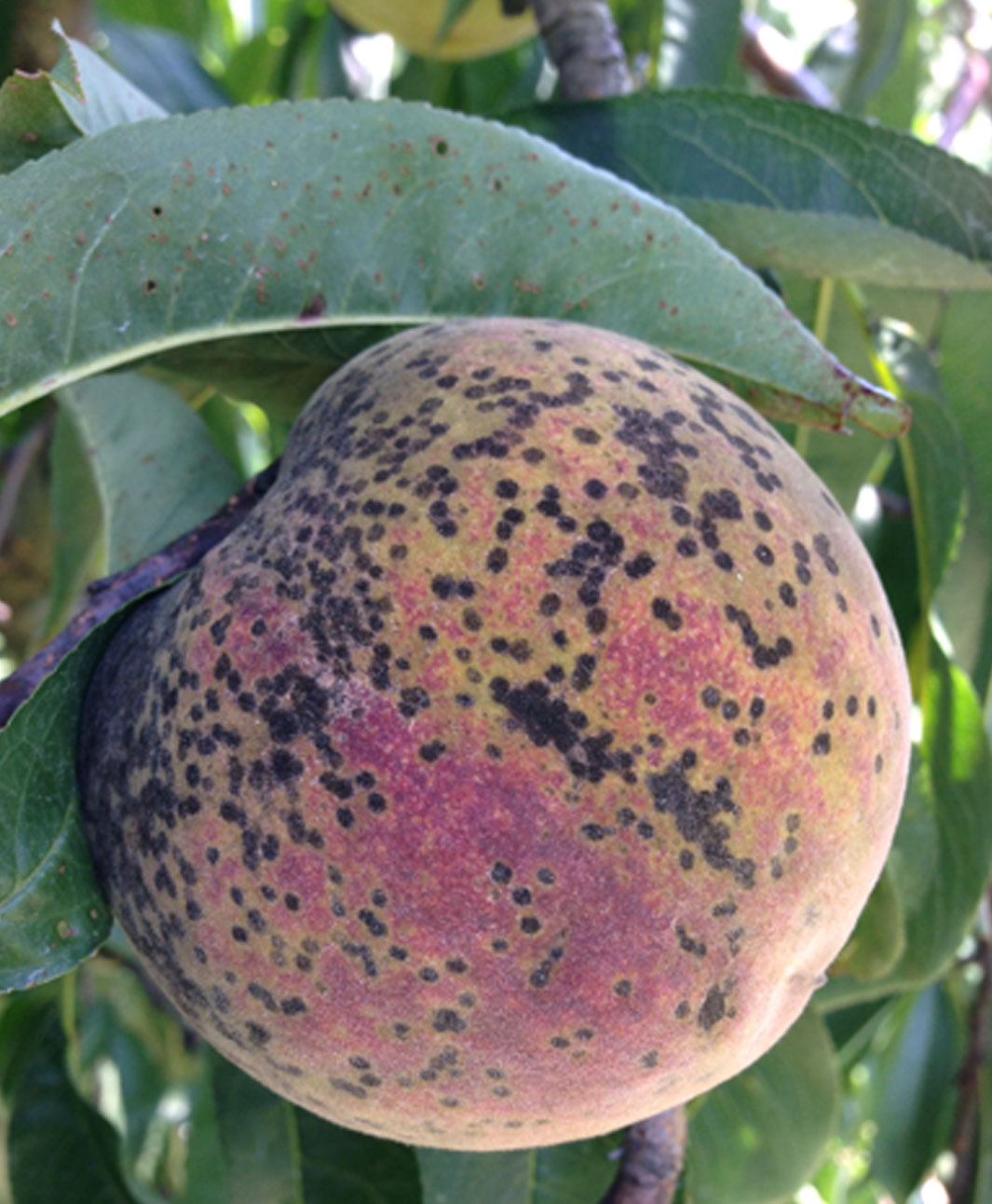Last summer’s abnormally wet conditions could have caused serious problems for the state’s peach crop, but thanks to University of Georgia researchers, scab disease issues were prevented.
College of Agricultural and Environmental Sciences plant pathologists have been researching fungicide use to help prevent the disease, which has caused significant damage on Georgia’s peach farms in years past. Last summer was one of the most trying testing periods these fungicides have faced, yet farmers reported very few instances of scab disease, said Phillip Brannen, a plant pathologist based in Athens.
“I’ve conducted a lot of research in the last three to four years to try to fine-tune fungicide applications, to make sure that we’re getting the optimal control,” Brannen said.
Peach scab is a fungal disease that thrives in a wet environment. Scab is the second most impactful disease that peach farmers deal with in the state, ranking just behind brown rot, Brannen said. It doesn’t affect the safety of the fruit, but if left untreated, it can degrade the crop’s aesthetic appeal.
Brannen says the research is important because a significant number of farmers complained that scab has caused their peaches to be downgraded. When the disease forms spots on the fruit, the USDA rating goes down, and producers see less return in the marketplace.
“Even a few spots are enough to downgrade the peaches as you go into market. That could cost farmers a lot of money, just by having a few spots,” Brannen said. “It’s definitely a disease you have to control. You just don’t want any spots on your fruit. The marketplace will not tolerate it.”
High incidence of peach scab can also result in the cracking of the fruit skin in and around the spot, allowing brown rot to move into the damaged tissues. Brown rot can wipe out an entire peach crop, ranging from green fruit to mature fruit that’s ready for harvest.
While peach scab’s impact can be devastating, management of the disease has proven to be effective. During last year’s wet summer months, Brannen’s test plots that weren’t treated with fungicide, produced peaches that had 300-400 spots, often with the whole peach covered. Treated plots, however did not experience peach scab, a result that was mirrored across the state.
“Last year was incredibly wet; I think if there’s any year where you would have had problems with brown rot and scab on peaches, it would have been last year, but we simply did not, Brannen said. “This is a testament to well conducted research, effective fungicides and excellent use of these tools by our peach producers.”
Though fungicide treatments appear to be controlling peach scab effectively, Brannen is cautioning farmers against becoming lax with their applications. Brannen is currently researching alternative fungicides and combination of different fungicides in hopes of thwarting the development of resistance.
“We’ve conducted a lot of research over the last 10-plus years to look at resistance management on our fungicides, making sure they don’t develop resistance or making sure producers know when they do have resistance. Our producers have done an excellent job of incorporating the recommendations we’ve given them,” Brannen said.







